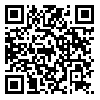1. Wood‐Downie H, Wong B, Kovshoff H, Cortese S, Hadwin JA. Research review: a systematic review and meta‐analysis of sex/gender differences in social interaction and communication in autistic and nonautistic children and adolescents. J Child Psychol Psychiatry. 2021;62(8):922–36. [
DOI]
2. Ambrose D, MacKenzie DE, Ghanouni P, Neyedli HF. Investigating joint attention in a guided interaction between a child with ASD and therapists: a pilot eye-tracking study. Br J Occup Ther. 2021;84(10):637–46. [
DOI]
3. Azizi M, Alizadeh H, Poushaneh K, Tajali P. Evaluating the effectiveness of joint attention training program on speech skills and receptive and expressive language components of children with autism spectrum disorder. Applied Family Therapy Journal. 2023;4(3):215–34. [
DOI]
4. Pérez-Fuster P, Herrera G, Kossyvaki L, Ferrer A. Enhancing joint attention skills in children on the autism spectrum through an augmented reality technology-mediated intervention. Children. 2022;9(2):258. [
DOI]
5. Azadian E, Majlesi M, Saberifar S. Linear and non-linear changes of center of pressure due to vestibular system disorders: comparison of balance and gait in hearing and sensorineural deaf children. Pajouhan Scientific Journal. 2023;21(3):175–85. [Persian] [
DOI]
6. McLaren R, Smith PF, Taylor RL, Niazi IK, Taylor D. Scoping out noisy galvanic vestibular stimulation: a review of the parameters used to improve postural control. Front Neurosci. 2023;17:1156796. [
DOI]
7. Jostrup E, Nyström M, Claesdotter-Knutsson E, Tallberg P, Gustafsson P, Paulander O, et al. Effects of stochastic vestibular stimulation on cognitive performance in children with adhd. Exp Brain Res. 2023;241(11–12):2693–703. [
DOI]
8. Deng J, Lei T, Du X. Effects of sensory integration training on balance function and executive function in children with autism spectrum disorder: evidence from Footscan and fNIRS. Front Psychol. 2023;25;14:1269462. [
DOI]
9. Oster LM, Zhou G. Balance and vestibular deficits in pediatric patients with autism spectrum disorder: an underappreciated clinical aspect. Autism Res Treat. 2022;2022:1–5. [
DOI]
10. Zalys V. Interactive multi-sensory environments for children with autism spectrum disorders. In: ATEE 2020 - Winter Conference. Teacher Education for Promoting Well-Being in School [Internet]. 2021. [
DOI]
11. Habbak ALZ, Khodeir L. Multi-sensory interactive interior design for enhancing skills in children with autism. Ain Shams Engineering Journal. 2023;14(8):102039. [
DOI]
12. Al-Saigh MN, Mahmoud KF. The impact of smart interactive technologies in creating personal internal spaces: an analytical study of user preferences for interactive shape characteristics. International Journal of Sustainable Development and Planning. 2023;18(8):2339–48. [
DOI]
13. Rashidi A, Farmarzi S, Samadi M. Meta-analysis of cognitive rehabilitation based on computer games on improving the performance of children with autism spectrum disorder. In: The 4th National Conference and The Second International Conference of Computer Games; Opportunities and Challenges [Internet]. Kashan; 2017. [Persian]
14. Shahid HM, Tariq S, Saleem I, Butt MA, Tariq A, Tariq I. Health care: role of ICT in autism. In: 12th International Conference on Cognition and Exploratory Learning in Digital Age [Internet]. 2015.
15. Bardideh MR, Mansor M, Karimpoor M. Preparation and validation of behavioral disorders in autistic spectrum children (Parent form). Psychological Models and Methods. 2010;1(1):15–25. [Persian] [
Article]
16. Mundy P. Annotation: The neural basis of social impairments in autism: the role of the dorsal medial‐frontal cortex and anterior cingulate system. J Child Psychol Psychiatry. 2003;44(6):793–809. [
DOI]
17. Armaghan Sh, Pooretemad HR. Assessment and treatment of joint attention deficits in children with autistic spectrum disorders. Tehran: Arjmand Publications; 2021. [Persian]
18. Vakilizadeh N, Abedi A, Mohseni Ezhiyeh A, Pishghadam E. Effectiveness of family-based early intervention on the degree of joint attention (responding) of the children with autism spectrum disorder: a single-subject study. J Rehabil. 2016;17(1):40–51. [Persian] [
DOI]

 ، لیلا کاشانی وحید2
، لیلا کاشانی وحید2 
 ، مریم اساسه*2
، مریم اساسه*2 
 ، سمیرا وکیلی2
، سمیرا وکیلی2 
 ، مجید ابراهیم پور2
، مجید ابراهیم پور2 




